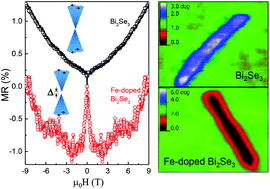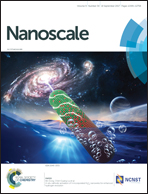Intrinsic ferromagnetism and quantum transport transition in individual Fe-doped Bi2Se3 topological insulator nanowires
Abstract
Time-reversal symmetry is broken by magnetic doping in topological insulators (TIs). An energy gap at the Dirac point opens and thus, generates numerous surface carriers. TI nanostructures are an ideal platform to investigate exotic surface transport behavior due to their large surface-to-volume ratio, which enhances the contribution of the TI surface states. However, magnetic doping into TI nanostructures has been challenging, and induced magnetic behavior has remained elusive. Herein, we have synthesized Fe-doped Bi2Se3 nanowires using a facile chemical vapor deposition with a doping concentration of ∼1 at%. The combined structural characterizations illustrate the homogeneous distribution of the Fe dopants. Cryogenic magnetic force microscopy gives direct evidence of the spontaneous magnetization with a Curie temperature of ∼40 K in a single nanowire. The transport measurements show a quantum transition from weak anti-localization to weak localization behavior. All the evidence indicates the existence of intrinsic ferromagnetism and gapped topological surface states in the TI nanowires, paving a way for future memory and magnetoelectric nanodevice applications.



 Please wait while we load your content...
Please wait while we load your content...